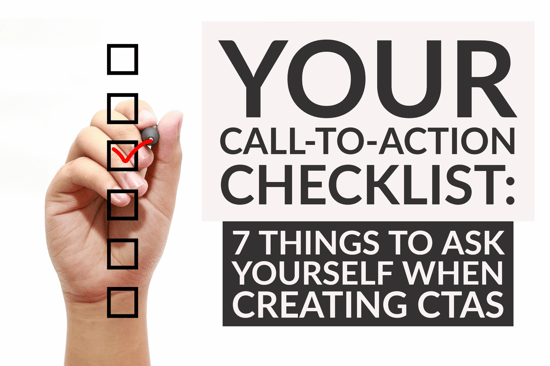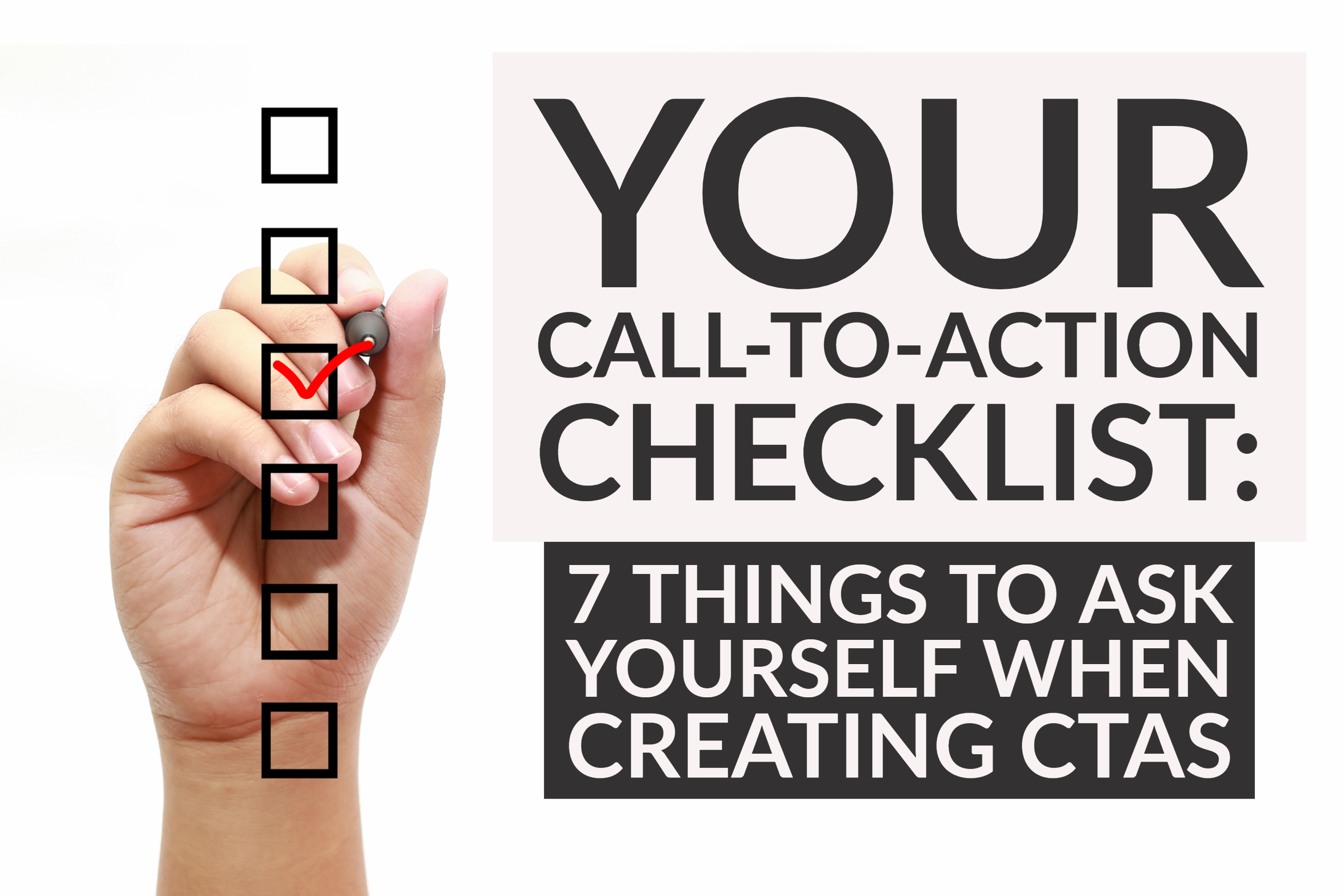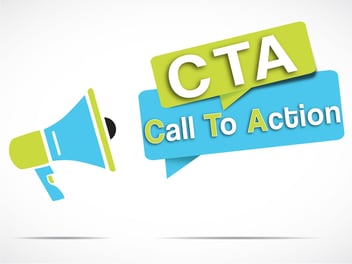Your Call-to-Action Checklist: 7 Things To Ask Yourself When Creating CTAs

Calls-to-action, also called CTAs, are the essential link between your blog posts, emails, website home page or social media posts and the landing pages where visitors can access marketing offers and convert into leads.
While the advertising and sales concept of a call-to-action is to ask for the sale, when implementing inbound marketing to generate and nurture leads online, CTAs and the offers to which they link are often less about making a sale today and more about securing a contact and connection through which to build rapport over time. (Learn more about how even public relations can use CTAs through this video.)
CTAs can also take on many forms, from strictly text (such as a paragraph in a blog post describing a downloadable case study) to graphic buttons used in a website banner or sidebar, or a combination of text and art, such as you might see in a Facebook post.
Regardless of what type of CTA you are creating, asking yourself a few questions will help you determine if that call-to-action is likely to achieve its desired result: driving a website visitor, blog reader or social media follower to a landing page, where they will fill out a form and convert into a lead.
Let’s walk through seven questions you should ask yourself about every CTA.
1. Is The Offer Clear?
Readers should be able to tell at a glance what the offer provides. Is it an ebook? A free trial? A weekly e-newsletter? A product sample? Don’t make visitors guess at what they will get if they click the CTA and follow the link. (Need ideas for downloadable offers? Real Life Examples Of Downloadable Offers For Inbound Marketing.)
2. Is The CTA Action-Oriented?
Along with making it clear what the offer is, the CTA should be clear about what action visitors will take when they get to the landing page. That might mean specifying that they will “download” the ebook, “join” an online community, “schedule” a free consultation or “view” a product demo.
3. Is The CTA Above The Fold?
In an eye-tracking study investigating website reading behaviors, Nielsen Norman Group found that website visitors spend 80 percent of their attention “above the fold,” meaning on the portion of the webpage that is initially viewable.
Visitors should not have to scroll down to see a call-to-action on a page. In reality, most won’t.
You can apply the same concept to CTAs contained in emails — have at least one CTA located close to the top of an email, rather than waiting to include one at the very end. Many of your readers may not stick with you the whole way.
4. Does The CTA Stand Out?
The CTA needs to be noticeable to be effective. It should be a different color than the surrounding part of the page, and should have white space around it.
CTAs need to be noticeable to be effective.
Even when you are creating a text-based CTA as part of a blog post, you can separate it from the rest of the text and highlight that it is something more you have to offer by using boldface text, italics, or block quote formatting so that the call-to-action stands apart from the surrounding text.
5. Is There Consistency Between The CTA And Landing Page?
Don’t take a chance on confusing the visitor as they move from the CTA to the landing page. It should be obvious that the landing page is for the same offer as the CTA.
The call-to-action and landing page should have the same:
-
Headline
-
Action Verbs
-
Images
6. Are There CTAs For Different Stages Of The Buying Cycle?
Not all of your website visitors will be at the same stage in the buying cycle. As you develop inbound marketing campaigns, each one should include offer for various personas and buying cycle stages, such as:
-
Podcasts and ebooks for top of the sales funnel;
-
Testimonials and product guarantees for middle of the funnel; and
-
Demos and sales proposals for bottom of the funnel.
Be sure all of those various stages are represented in the CTAs on your website. You should have CTAs to match all of your offers. (Read more here: Segment Your CTAs Based On The Sales Funnel.)
7. Does Each Page Have A CTA?
Every page on your website should have at least one CTA that is relevant to the content of that page. Your blog might have offers for ebooks related to the blog topic. Your “About Us” page should have a “Contact Us” CTA. Product pages should have CTAs for a free trial or videos of the product in action.
Your home page should include two or more calls-to-action. These could be in a banner ad across the top, in the side bar, or as a contextual CTA in the text on the page.
As I noted, calls-to-action also could and should be included in emails, on social media, and even embedded in your downloadable offers such as ebooks. They are how you show prospects and leads just what you have to offer them as they work their way through the buyers’ journey.
Download our CTA Placement Checklist for more ideas about how and where to use calls-to-action to drive traffic to your landing pages.
Wondering if your website CTA strategy stacks up? Our Call-to-Action Report Card assigns each of these criteria a point value. Download it and evaluate your site. If not, there are more best practices outlined in our free Comprehensive Guide to Creating & Executing Calls-to-Action.
-1.png?width=1652&height=294&name=Jones(RGB)-1.png)












